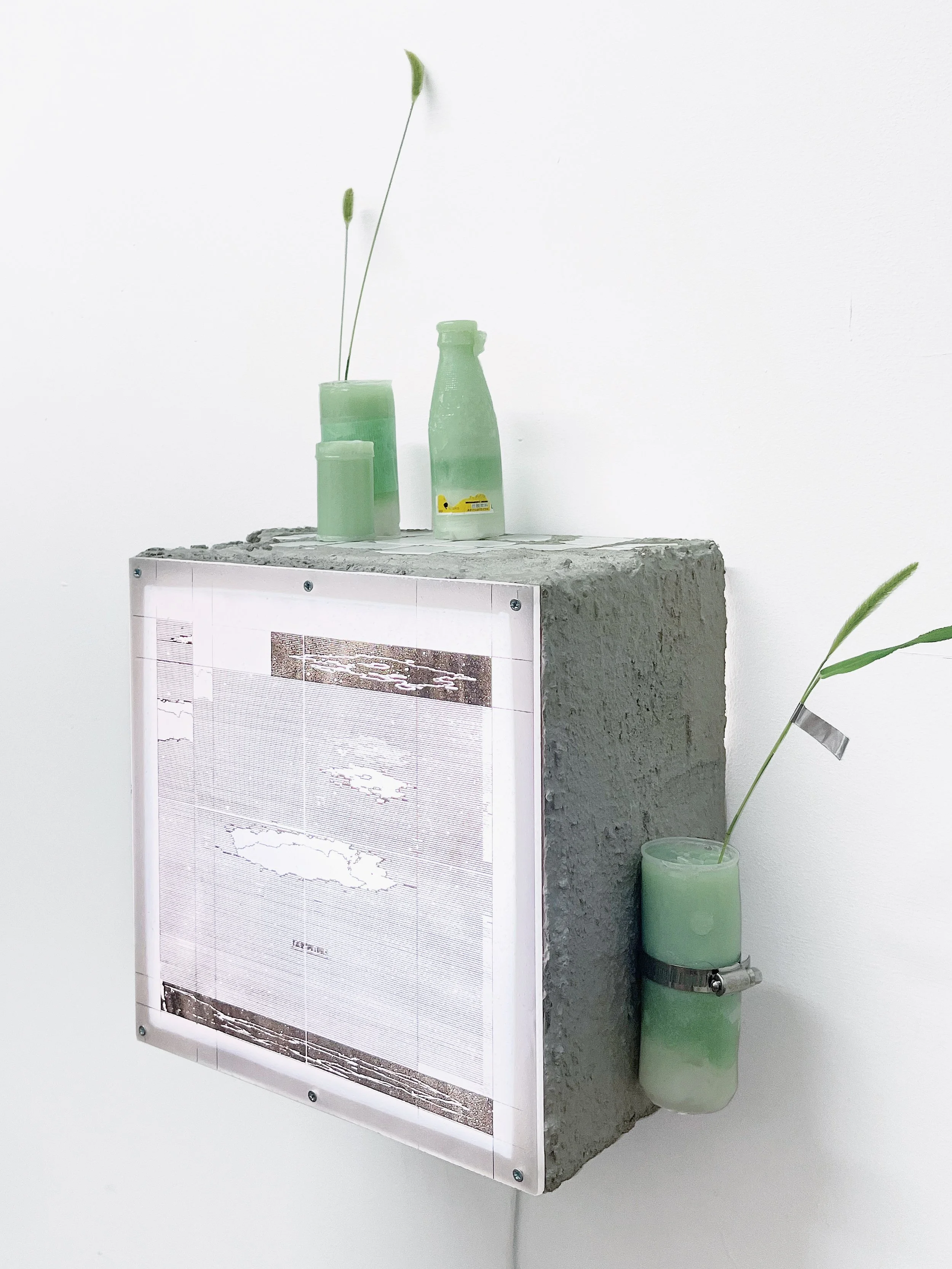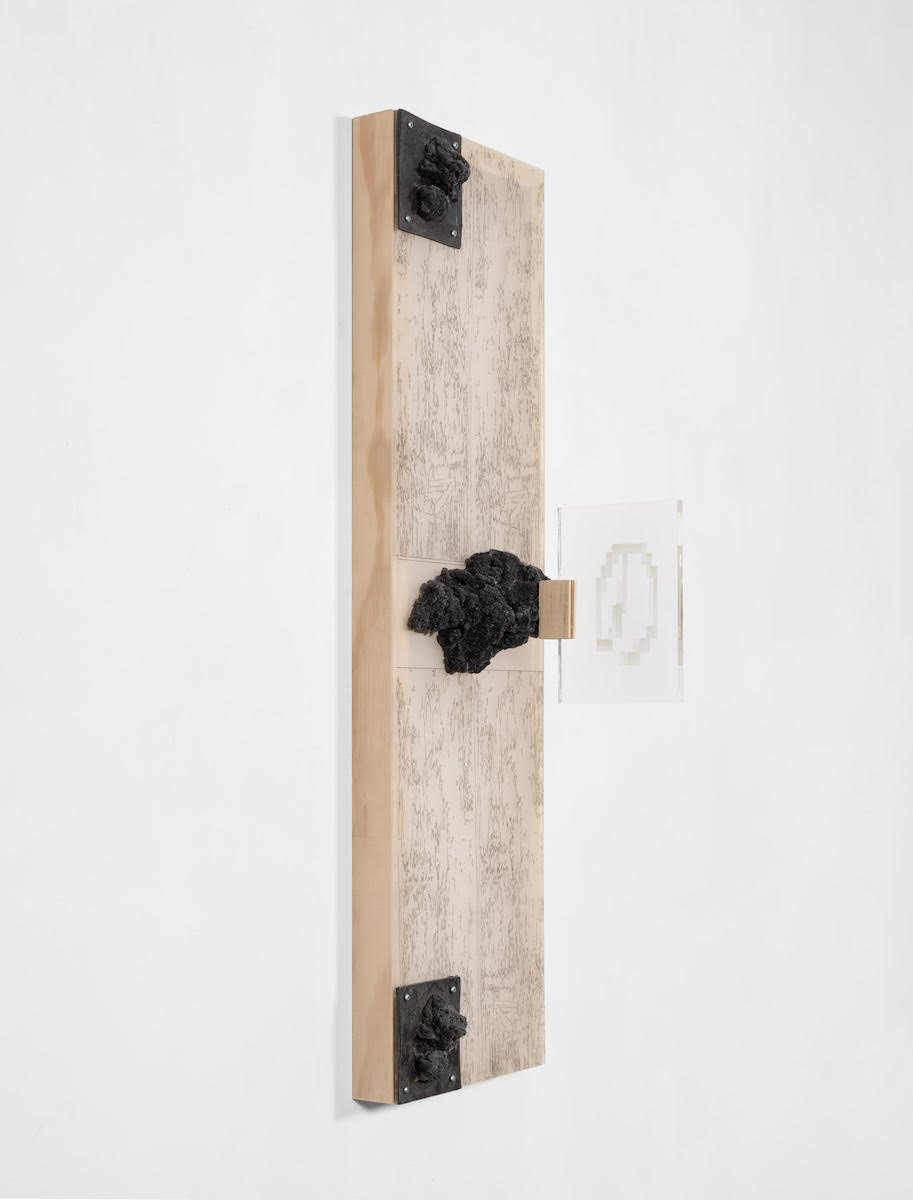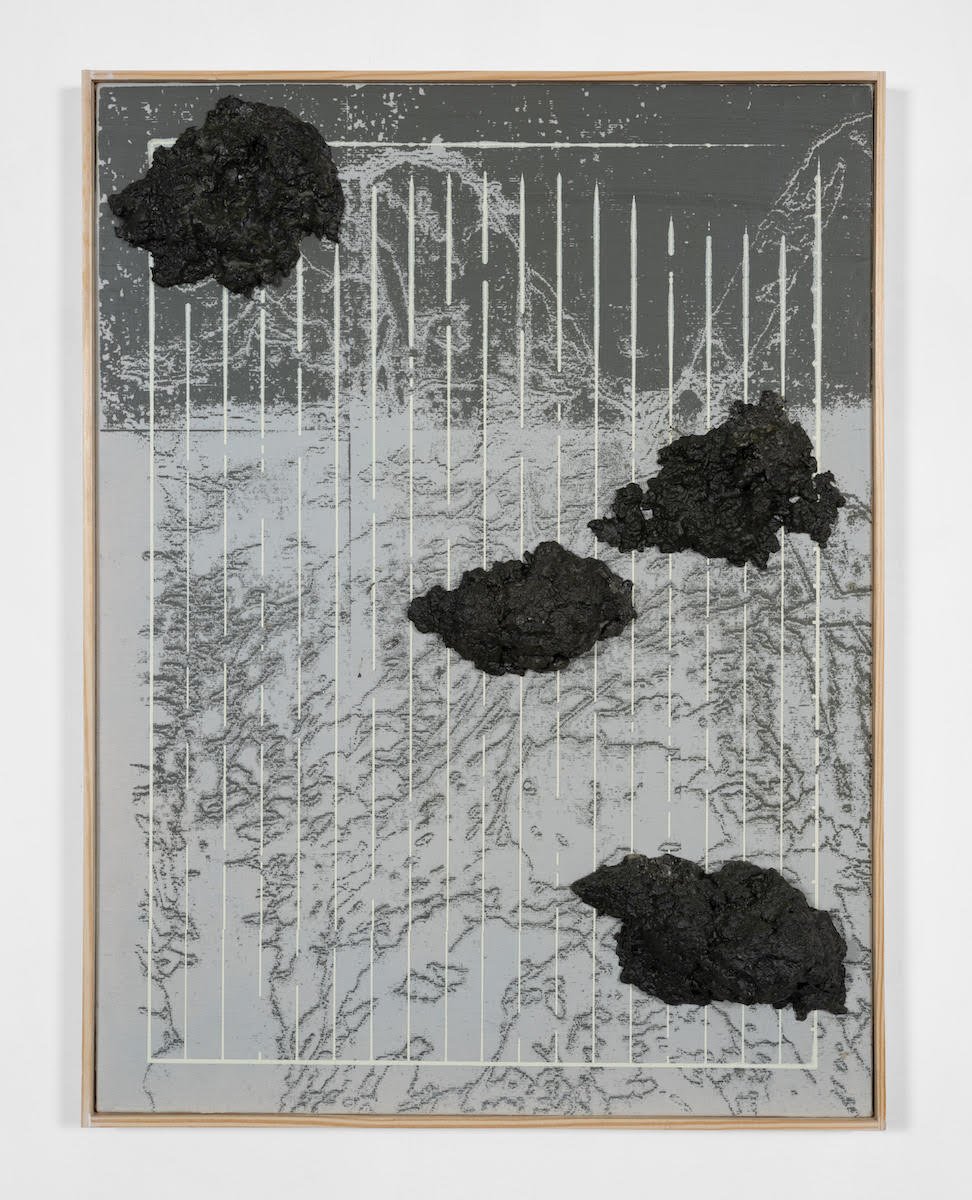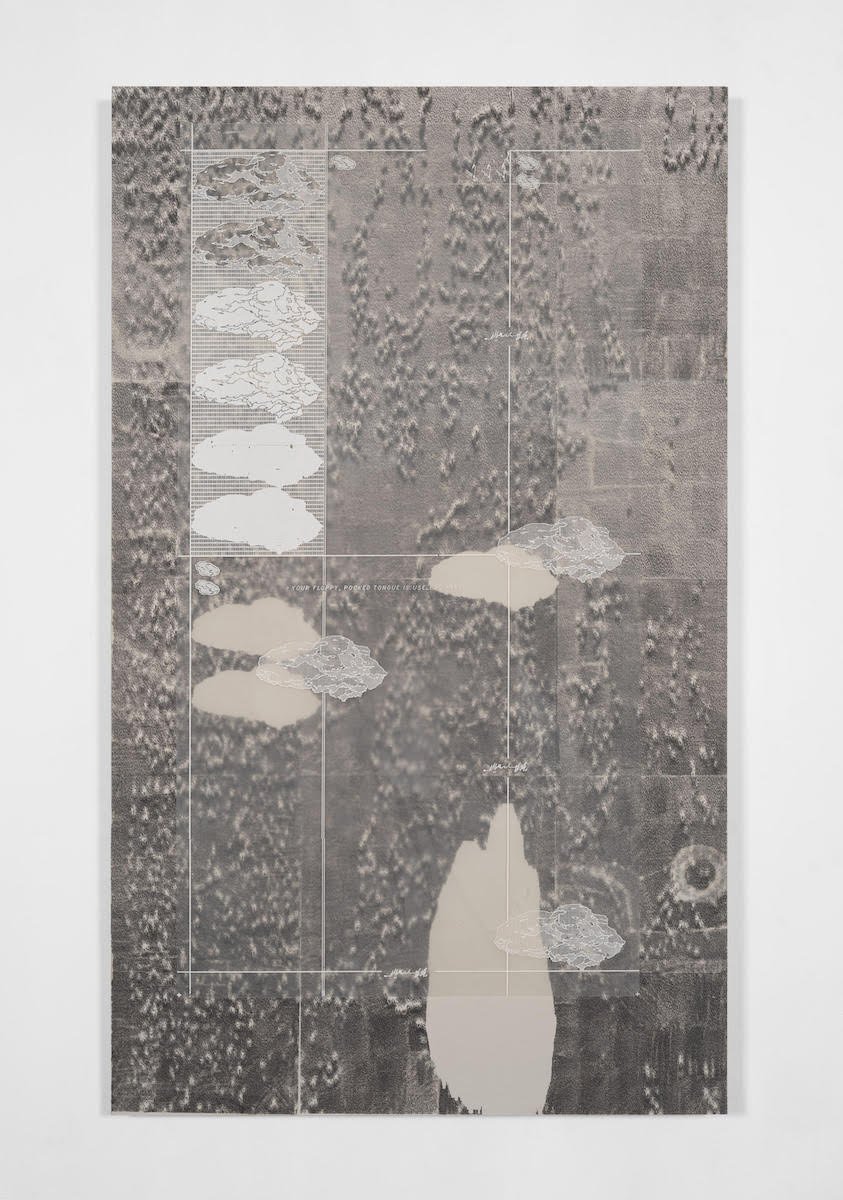Naomi Nakazato
“The impetus of my practice is the desire to encapsulate this event of slippage and the repositioning and reclaiming that follows. I often find my research latches onto writings and works that are concerned with the politics of visual perspectives, representations of land and the natural world, and the absurdism of machine translations.”
I find your works truly fascinating. They condense scientific meticulousness and speculative entanglements. What informs your overall research?
My work slants the aims of various scientific and archival methods to describe a kind of imposter syndrome experienced as a queer, biracial person. This interpolation of artistic and investigative practices allows me to challenge notions of authenticity and provide evidence of belonging to an in-between place.
The makeup of this third space is heavily informed by a stint in my college’s graphic design program, in which I recognized my inclinations towards arrangement as potential to build worlds and narratives. In lieu of semiotics’ use in branding, how can a distilled archive of symbols articulate the sharp demarcation of being othered? Can design and its gestalten underpinnings dub the unreliability of translations? These questions have led me to work with an economy of space and exercise care in its usage, not unlike the rituals of gardening or caring for the dead.
In this place of mercurial boundaries, an act of balance traces the desire felt between points of contact. Monuments are moored shapeshifters, conjuring a kinship to material while refusing namability. They are rocks, memories, encryptions, crystallizations of something and nothing. My involvement is simply setting up systems in which these moments of synthesis can occur.
What is your creative process?
My practice employs both a digital and an analog component, so naturally my time is devoted to working within each.
Projects begin with culling images from virtual walks I take through familiar places on Google Maps, as well as sorting through my own documentation of those places. I then manipulate fragments of landscapes found in these images, distorting and collaging them digitally to create a new library of a place. Often my works are an amalgam of new and previously used symbols and bits pulled from these archives.
From there, I collate and arrange the new images, effectively scrubbing them of their authenticity. This particular step reflects the complications of being biracial, as well as my scrutinization of authentication as a device of othering.
Once I’ve established these landscapes, I determine supporting structures and surfaces and begin the process of manually transferring images. Multiple translations from the digital screen to hand further obscure the images from their origins and allow for errors in an otherwise meticulous process.
What has your overall research stemmed from?
The motivations for my work are informed by the experience of being Japanese, but neither fluent nor particularly familiar with the land itself.
Growing up in the US, I was culturally exposed through gifts and some holiday rituals, but had not visited Japan until I was eighteen due to naturalization complications. The experience of visiting for the first time felt akin to tutorial modes in video games: an awareness of certain mechanics with the addition of new frustrations and ineptitudes to grapple with. It is widely understood that Japan is simultaneously westernized and insular, given its lengthy history of economic triumphs and geo-political obsessiveness. This seeps into the culture, creating a fetishistic, inside v. outsider mentality, and with it, pockets of polarized groups. Having revisited multiple times, I understand that any level of fluency and alignment has little impact on my being othered.
With these experiences in mind, the impetus of my practice is the desire to encapsulate this event of slippage and the repositioning and reclaiming that follows. I often find my research latches onto writings and works that are concerned with the politics of visual perspectives, representations of land and the natural world, and the absurdism of machine translations.
How do you make use of bidimensionality and tridimensionality in your works?
The variety of substrates I work with are chosen for their inherent qualities and ability to summon notions of expanse. From fields to screens, each surface signifies a framework of spatial desire. In this same way, I’m invested in the material of cast objects for its ability to reproduce detail and describe lossiness. The final landscape is one of artistic discretion as well as the result of a process-based compulsion to disrupt various metrics of authenticity.
In recent work, both cast and natural objects are organized as syntax on various forms of writing paper and official government documents. This process of arranging considers unique facets to each object and instead justifies form over organic status. With this approach, I am pointing to our facile ability to distinguish lineage and assign validity solely from perception.
Could we talk of translation as a method and mechanic of formation of your art pieces?
My use of transfer processes describes code-switching, failures in orientation (misregistrations), and the reverence of a mutable and inefficient language.
Drawing and printmaking are both rituals of production that operate on the act of seeing and translating, often through a fixed frame of perspective or bodily positioning. Both processes involve a reticulated, binary approach to transference, and draftspersons and printmakers alike prize the fluency and aptitude in which this is performed. A biased and imperfect channeling from the eye, to the hand, and then machine (and eventually back to the eye) is the mother tongue in my approach to image-making. The aid of mechanical and digital intermediaries (Google translate, screens, Mac Paint) speaks of my own complicated relationship with translators and the translation engines used to articulate myself when visiting Japan. Through varied methods–screenprinting, cyanotype, and solvent transfers–I’m able to rehearse a kind of desire and allow for the loss that comes from imperfect flattening.
How does rendering and place.making enter your practice?
Working within the medium of landscapes has given me the opportunity to employ a worldbuilding that expands on my attachment to a third culture.
The rendering of this space is taken on in the form of nonsensical maps and field studies of voids, eventually revealing themselves simply as an interest in permeable boundaries. My use of materials that are traditionally tasked with demarcating and tracing are paired with surfaces that are often fugitive, such as seaweed, carbon copy receipt paper, and thermoplastics. With conflated perspectives and the lack of a horizon line, orientation of oneself within the work is only established through an intimate connection to the stuff it is presented on. Material wayfinding grants the viewer access to an environment that would otherwise be disorienting.
These constructed environments obscure and then rupture boundaries to the point that inexperience of place is cherished.
courtesy of NAOMI NAKAZATO
interview by ILARIA SPONDA
What to read next














